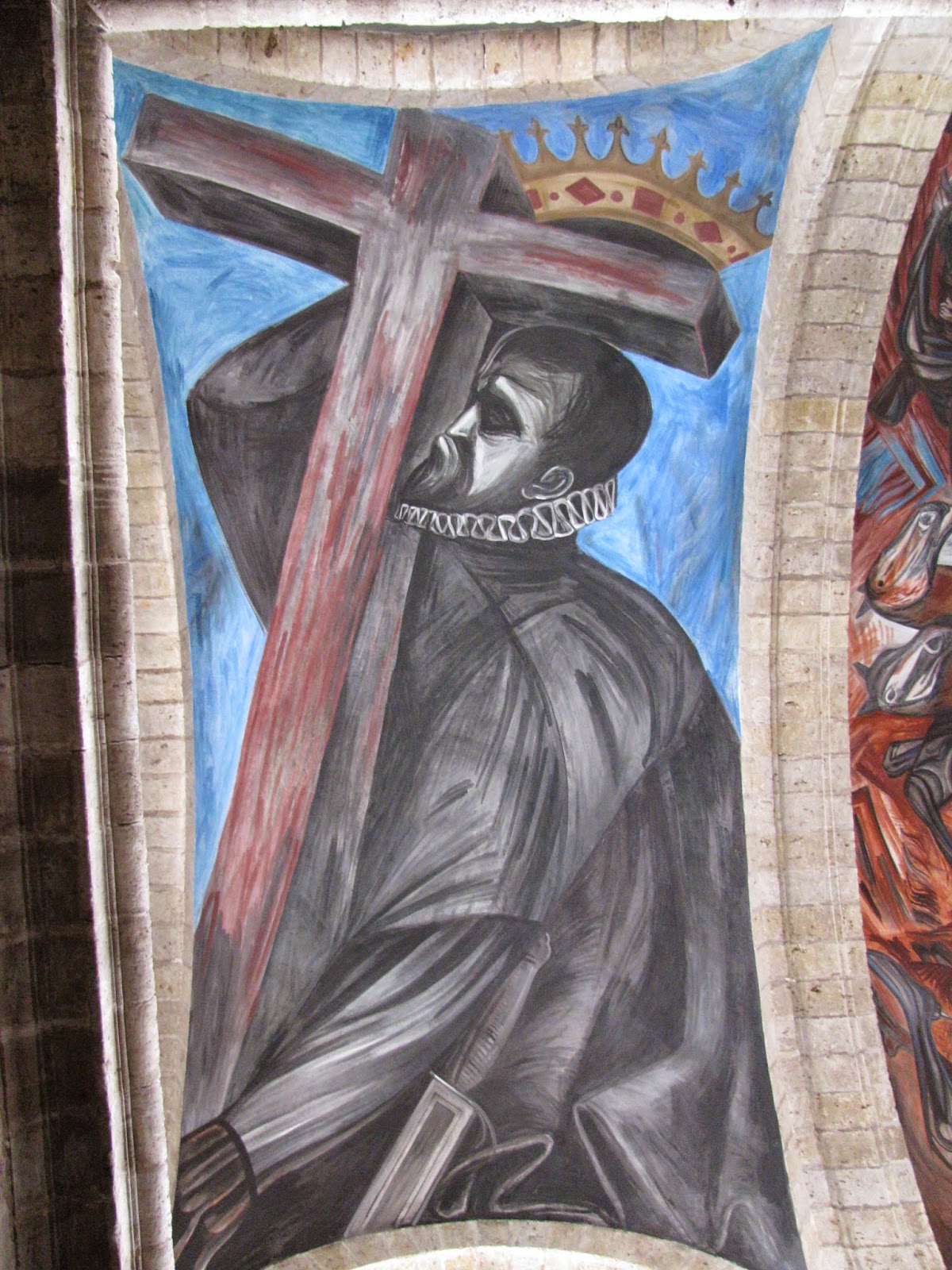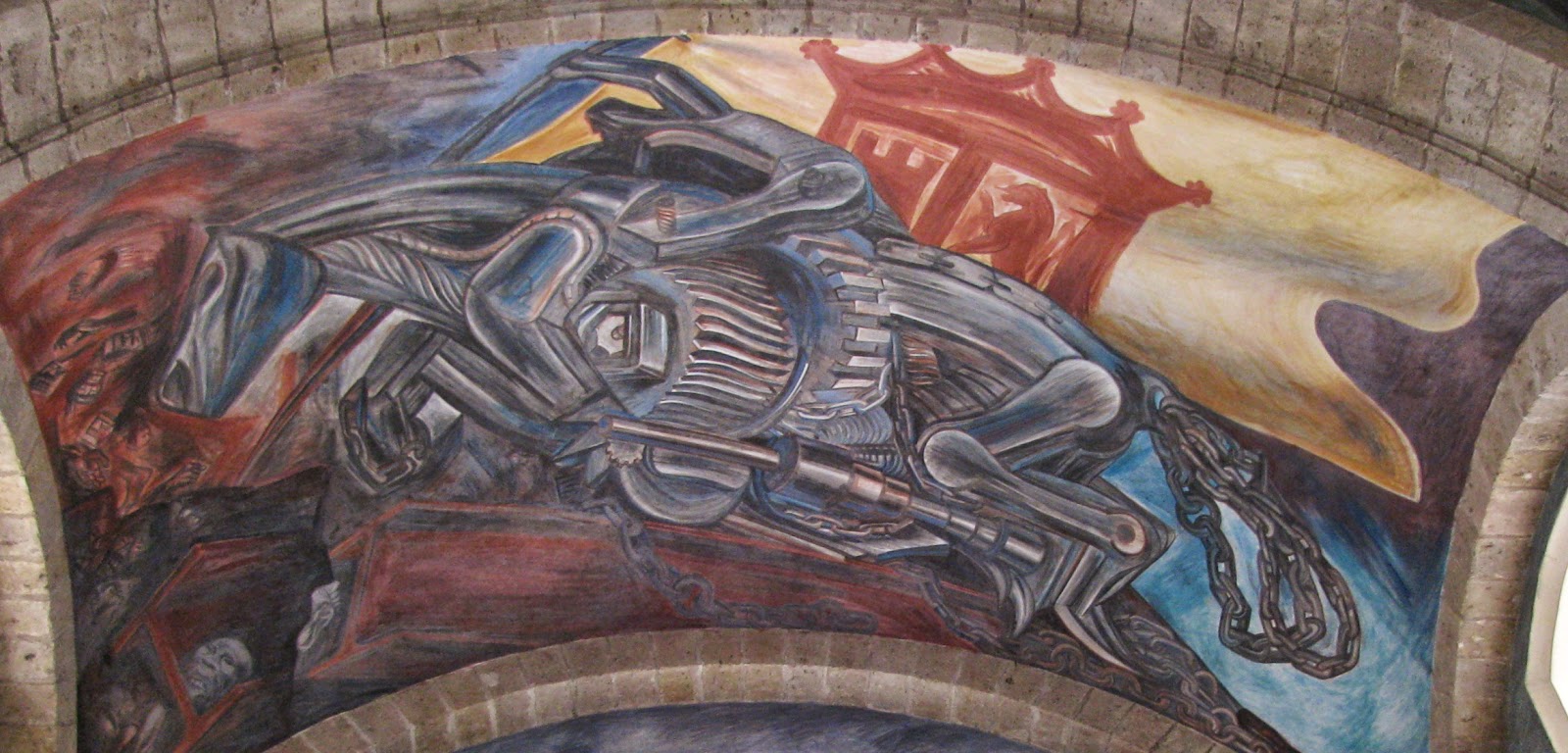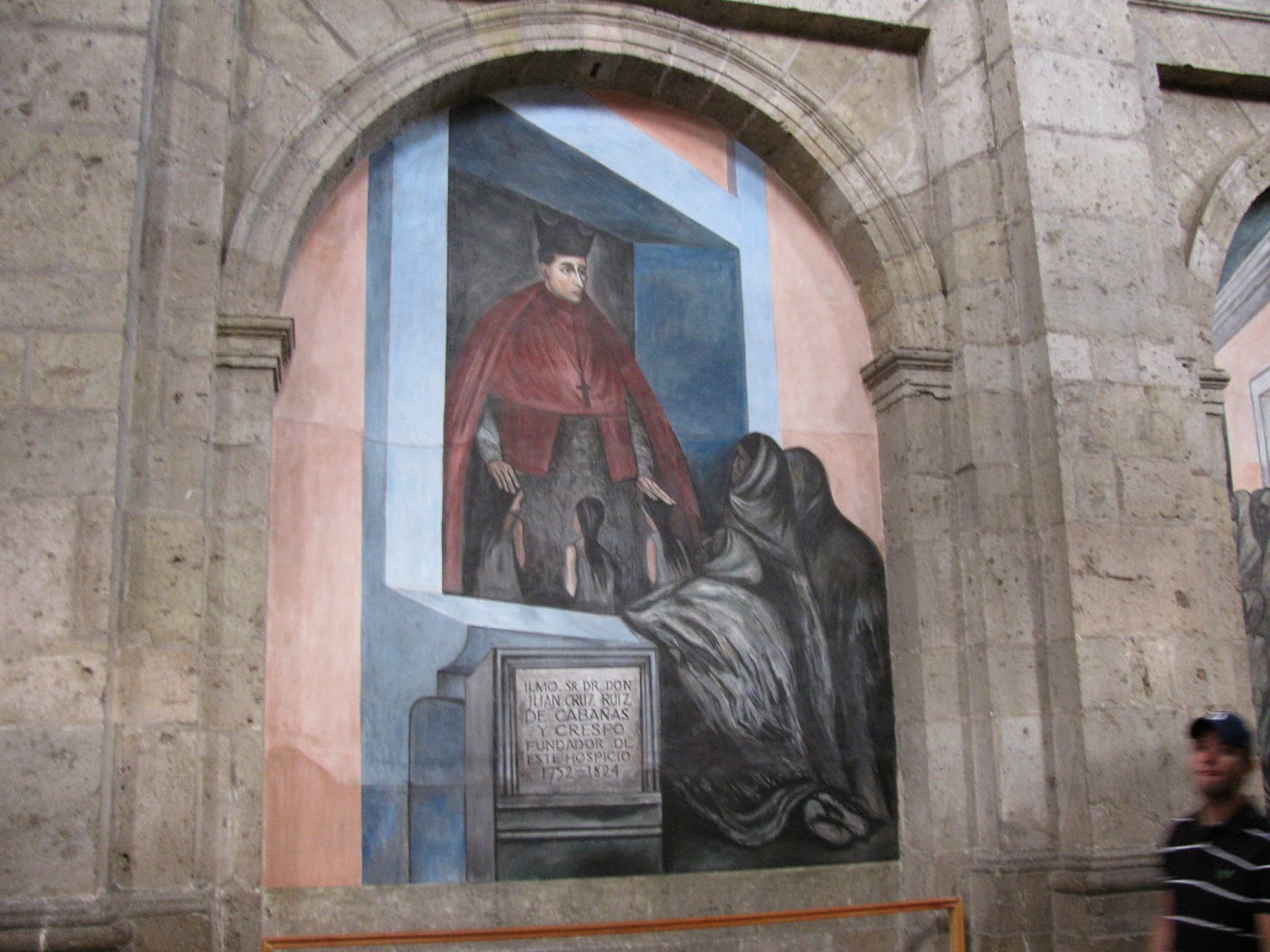Continuing with images of Orozco in Guadalajara with descriptions of the frescoes from Desmond Rochfort's
Mexican Muralists. The
Hospicio Cabanas was founded in 1791 by Bishop Ruiz de Cabanas, who planned it as a combination workhouse, hospital, orphanage, and almshouse. The architect who designed it was Manuel Tolsa from Mexico City, but he died before it was completed. It served as a hospital until 1980, when it was converted to the Cabanas Cultural Institute.
Orozco painted 57 frescoes in the building, covering the vaulted ceiling and walls with scenes of the history of Mexico from before the Spanish arrived to early 20th century industrialization. Like the other Guadalajara frescoes, his history has few heroes and does not suggest either an idyllic pre-Hispanic world or progress toward a peaceful and cultured present.
The transepts have images of ancient Mexico as a barbaric world, with rituals for the god of war, Huitzilipochtli.
 |
| Huitzilipochtli, God of War |
 |
| Rituals |
In the vaults of the nave, he depicted the Spanish conquest, with Philip II of Spain carrying a cross and crown, two-headed horses, and a Franciscan monk who carries a cross that doubles as a dagger. The Franciscan stands in front of a sheet of letters, indicating that the missionaries brought reading as well as torment to the Mexican people.
 |
| Philip II of Spain |
 |
| Cabanas ceiling, Franciscan |
 |
| Two-headed horse, Spanish conquest |
An armored horse, a mechanical, machine horse and rider suggests the invincible force of the Spanish army, and anticipates Jared Diamond's
Guns, Germs and Steel, as the Aztecs, weakened by foreign diseases, were no match for the Spanish weapons and armor.
 |
| Mechanized horse and rider |
The most puzzling scenes are the walls of the nave and transepts, where Orozco painted both icons of culture and art like Cervantes, El Greco and Cabanas himself, alternated with images of despotism and demagogery. Orozco continues to juxtapose positive and negative back into early history and forward into the contemporary world. Describing himself as a "free thinker," he does not adopt any political dogma and questions all ideology. Unlike most traditional narrative painting cycles, this one does not promote the idea of historical progress or lead to a happy ending, or even to an unhappy ending.
 |
| Despots |
 |
| Demagogues |
 |
| Bishop Cabanas |
The culminating image, in the high dome of the hall, is
Man of Fire, a nude figure rising through red and orange flames above three grey figures seated or reclining below. The grey figures are identified as either observers or as the other elements: air, earth and water. Below and around them are smaller panels depicting trades or occupations in grey. While one wants to see this as a heroic image, an apotheosis, it also looks like a horrific immolation.
 |
| Man of Fire, with surrounding trades/occupations |
 |
| Man of Fire and three surrounding figures |